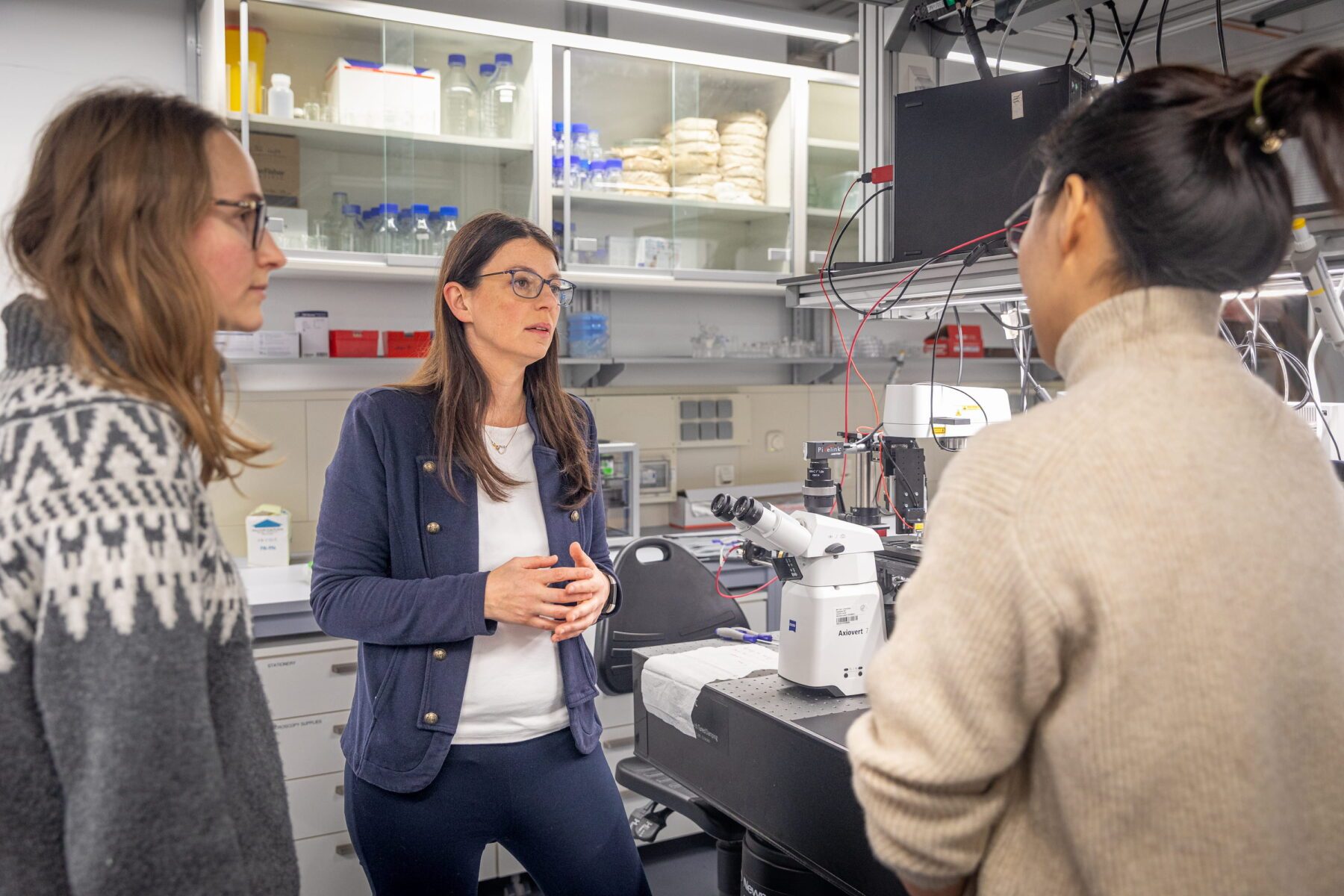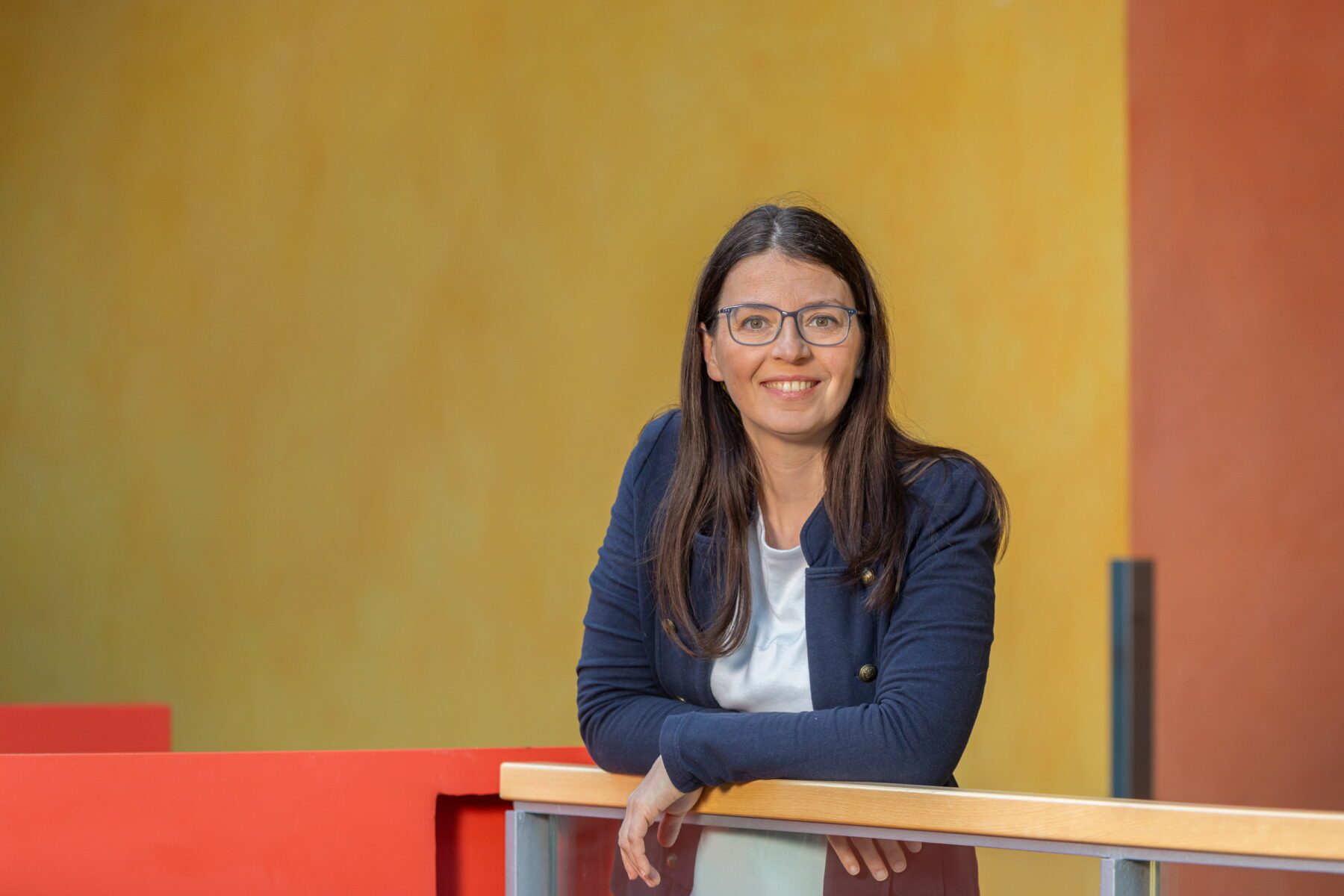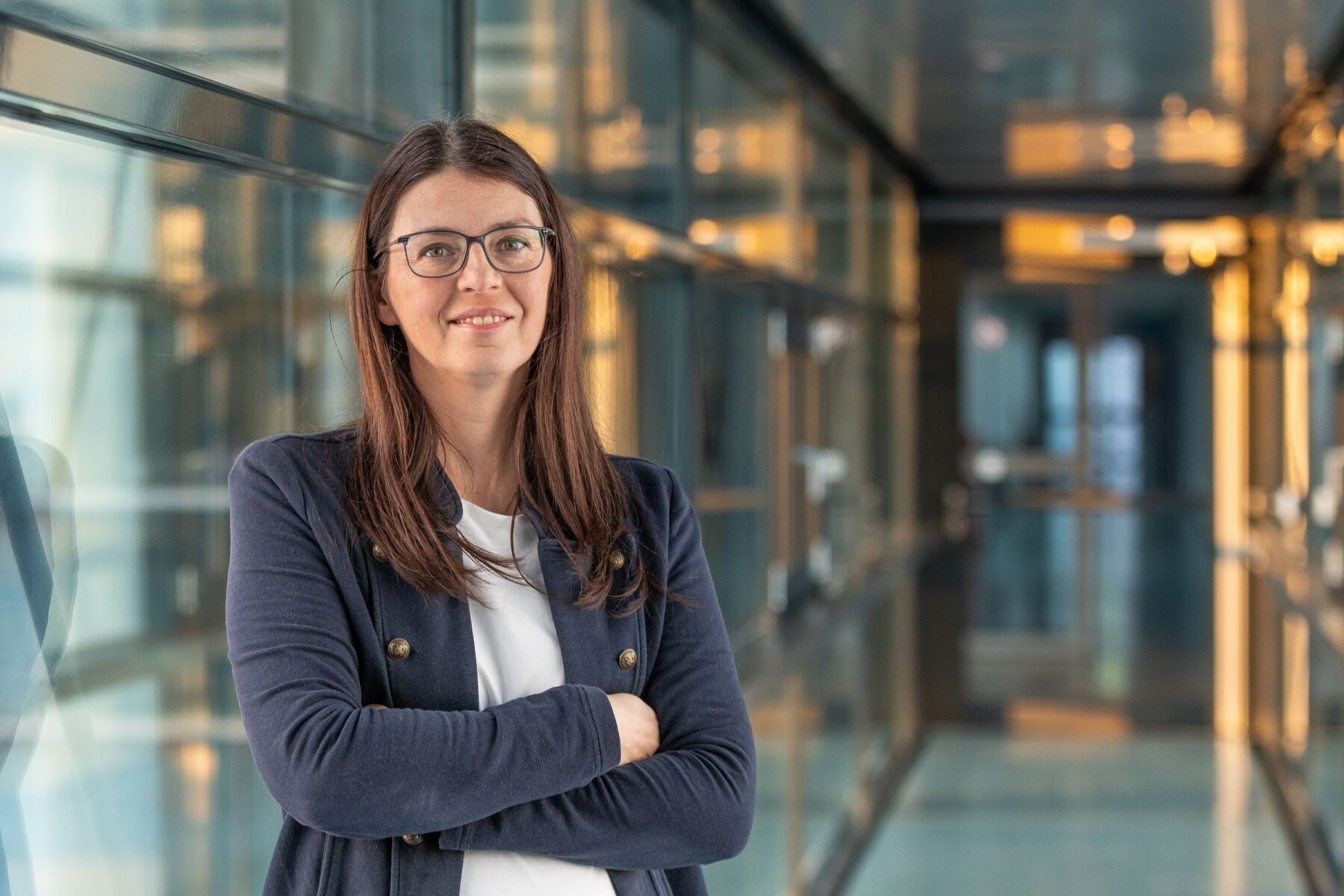
Potsdam Science Park Ambassador Professor Silvia Vignolini – »Brandenburg Has a Strong Location for Technology and Materials Science«
Prof. Silvia Vignolini researches how plants and animals create colours through tiny surface structures. She uses this knowledge to develop sustainable pigments and new materials. For the Potsdam Science Park, she sees a future in materials science that could enable many sustainable innovations.
Can nature’s most intense colors—like the ultra-white of beetles or the deep blue of iridescent berries—be recreated using biodegradable materials? Silvia Vignolini explores the ingenious ways plants and insects produce vibrant colors. The Cyphochilus beetle, for example, appears strikingly white because of the highly efficient way it reflects light. This effect is due to a nanostructure—a microscopic arrangement of material that manipulates light at the smallest scales. Similarly, the Pollia condensata berry shimmers with a bright metallic blue, not because of pigments, but due to tiny cellulose structures in its skin that scatter light in a specific way. Nature masterfully uses these microscopic architectures to generate breathtaking colors, and Silvia Vignolini wants to harness these natural innovations.
»We want to understand how living organisms manage to manipulate and mold material on a scale of a few hundred nanometres in such a way that it can produce these impressive structural colourations,« says Silvia Vignolini, who has been Director at the Max Planck Institute of Colloids and Interfaces (MPIKG) in the Potsdam Science Park since 2023 and heads the Sustainable and Bio-inspired Materials working group there.
For comparison, 100 nanometres correspond to about one-thousandth of a human hair. Silvia Vignolini and her team are therefore researching highly complex architectures on an unimaginably small scale. What can be observed in these tiny architectures: The skin of Pollia condensata berries gets its metallic blue shine from tiny cellulose fibres arranged in layers, like the steps of a spiral staircase. This special structure, called a helicoidal structure, reflects light in deep blue and other colours, creating the berry’s striking, shimmering effect.

Controlling Biological Processes to Develop Sustainable Colours
Silvia Vignolini is not only interested in understanding the biological processes that create such structural colouration—she also wants to exploit them herself. »If you understand the processes, you can control them and, in principle, recreate them,« says Vignolini. Her working group is known for this special expertise. The researchers can extract cellulose from wood shavings or cotton, for example, and isolate tiny fibre particles, known as cellulose nanocrystals, which they use as building blocks. By processing such particles in water they can reproduce architecture similar to the one observed in the berries giving rise to structural colouration. »It seems like magic when the fibre particles come together to form their structures, but it can be described using physics,« says Vignolini.
The research conducted by Prof. Vignolini and the scientists at the MPIKG could also pave the way for the colour industry in the future. Unlike conventional colours, which are often based on toxic pigments, the bio-inspired colours are biodegradable and even edible. In addition, biopolymers such as cellulose, lignin or chitin come from renewable and partly recycled raw materials and are therefore a promising sustainable and climate-friendly alternative to synthetic colours for the industry.

Vita Prof. Silvia Vignolini
Nature-Inspired Spin-Offs
Silvia Vignolini is a passionate basic researcher who combines physics, chemistry and biology to understand the design principles optimised by nature. But she always considers the benefits of her findings. Before she came to the Potsdam Science Park, as a professor at the University of Cambridge, she founded two spin-offs: Sparxell and Seprify. Sparxell utilises cellulose nanocrystals to produce sustainable pigments. Seprify produces white pigments with cellulose inspired by the Cyphochilus beetle. »These pigments can safely replace the titanium oxide, which was previously used in many tablets and food, but has recently been banned in Europe because it is potentially carcinogenic.”
In the Potsdam Science Park, the Italian-born physicist wants to put down long-term roots in her basic research and drive forward new questions that could possibly lead to a new business venture, a spin-out from science. The conditions for this are excellent, she says. »The Max Planck Institute offers me a lot of freedom to develop projects in the long term and really good access to an excellent infrastructure,” says Vignolini.
In addition to sustainable colours, Vignolini and her team also want to develop new hybrid materials that use single-celled organisms to produce optical functions. »For example, we can use bacteria to manipulate light and produce colours that respond to the environment,« says Vignolini. »This is a good way to produce biodegradable materials with radically new functionalities in a sustainable way.« For example, in the future, computers could carry out computing operations with light using completely organic systems.
Potsdam Science Park Aggregates a Strong Expertise in Materials Science
Thanks to collaborations with the University of Potsdam, where there is a focus on polymer-based biomaterials, and with the Fraunhofer Institute for Applied Polymer Research IAP across the street, the scientists at the Potsdam Science Park, she says, have the cross-institutional and interdisciplinary expertise in materials science that is needed to tackle major challenges, transfer relevant research to industry, and create jobs.
»If you do good science, you enable young researchers to develop ideas that could one day be really useful and important for society.«
The increasing expertise also brings excellent specialists from the materials sciences to the Potsdam Science Park. »The Welcome Service provided by the site management is very helpful in giving them a good start in Potsdam,« explains Vignolini. »As a foreigner it is never easy to integrate in a new society and feeling welcome is extremely important.« In her team, in which scientists from several different countries work together, many have benefited from this offer.
»Brandenburg has a strong location for technology and materials science in Potsdam-Golm.«
»It is very important that we continue to set joint priorities in the region and strengthen them,« says Vignolini, who lives near the site with her four children. »The Potsdam Science Park will soon reach a critical mass of expertise in materials science so that the research can also be transferred into application on site.«
The projects of Standortmanagement Golm GmbH in the Potsdam Science Park are cofinanced by funds from the European Union and the state of Brandenburg.
Text: Mirco Lomoth | Photography: sevens[+]maltry